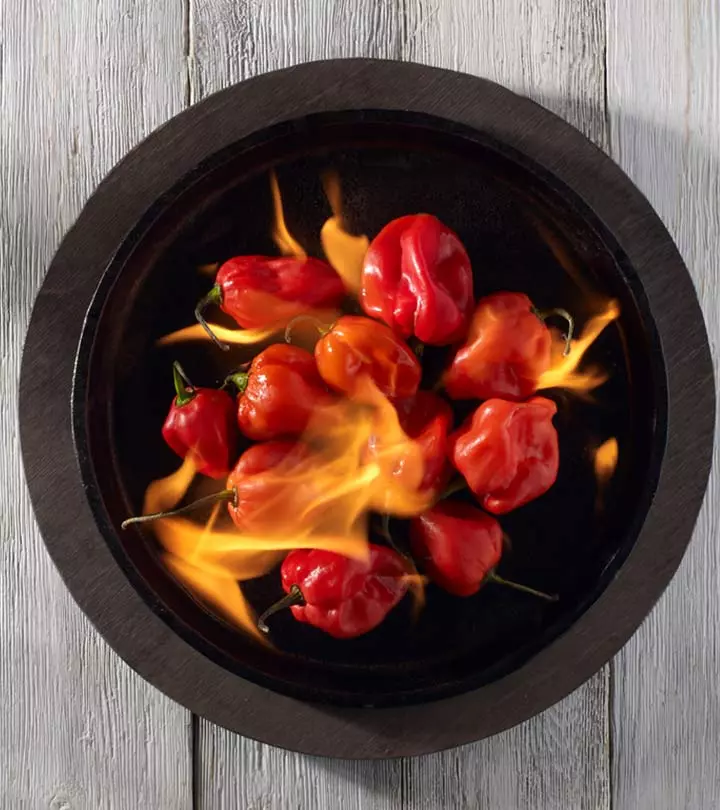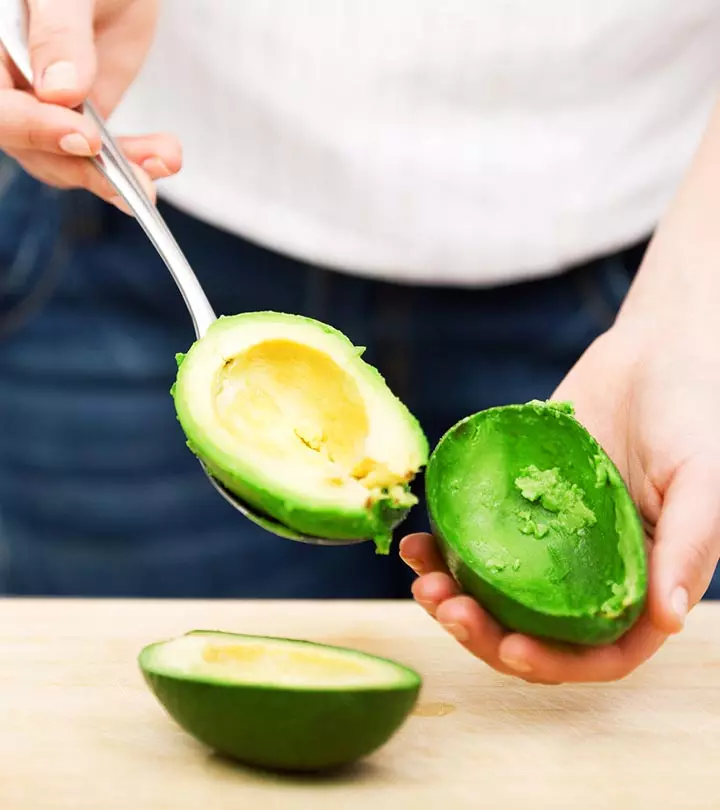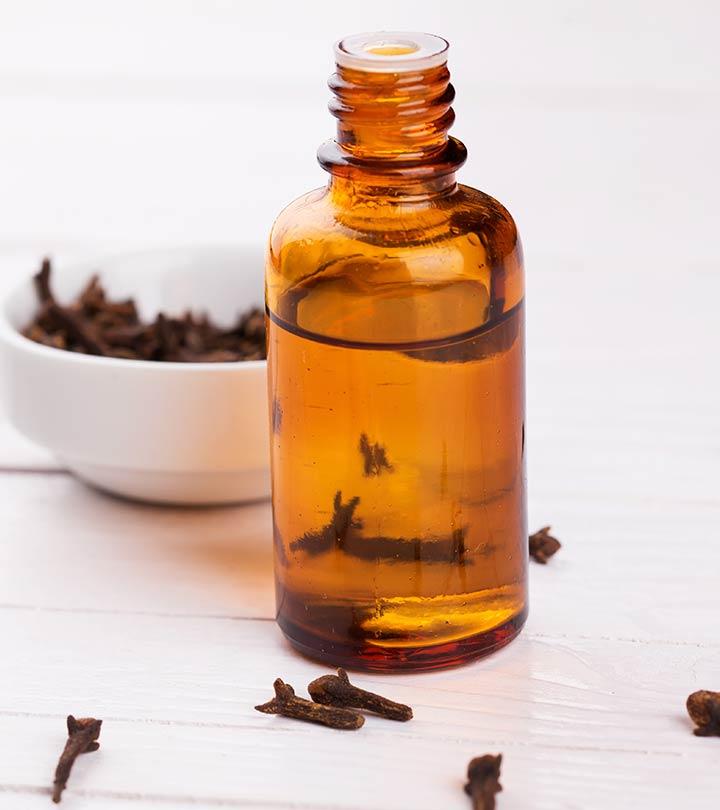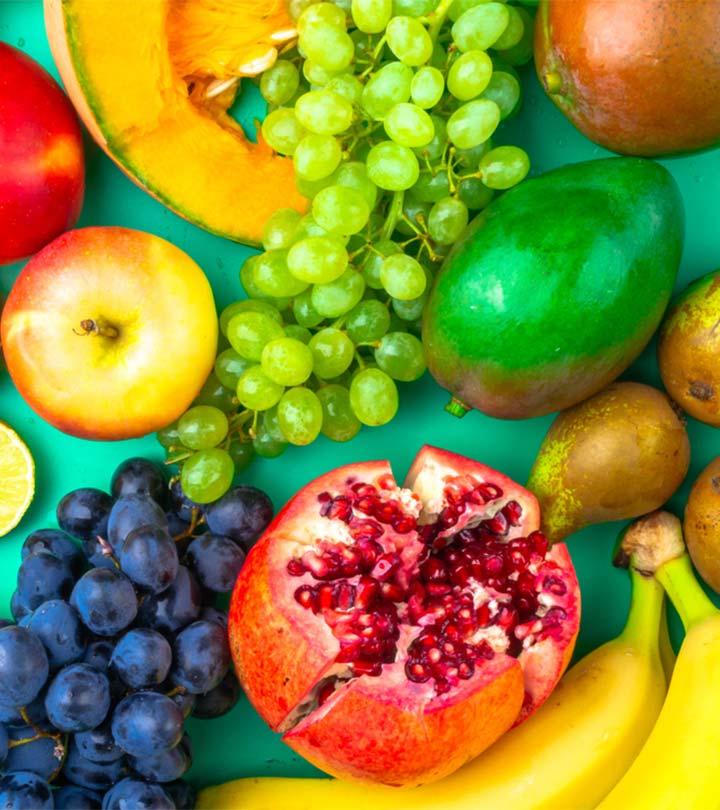6 Reasons You Should Eat Jalapenos
Adding this green pepper to your diet can enhance the food's taste and your health.

Image: Shutterstock
Jalapenos are medium-sized peppers with therapeutic effects. They are native to Mexico and carry an abundance of nutrition with several vitamins, minerals, and antioxidants. The capsaicini An active compound found in chilly peppers responsible for its pungency. It is used in treating nerve pain. in jalapenos helps with weight loss, reduces risk of cancer, improves heart health, and prevents liver damage. Jalapenos are easy to cook and can be added to your favorite dishes.
Here, we explore the potential health benefits of jalapenos, their possible side effects, and the ways you can include them in your diet. Keep reading.
 Know Your Ingredient: Jalapeno
Know Your Ingredient: JalapenoWhat Is It?
A medium-sized chili pepper with mild to hot spiciness.
What Are Its Benefits?
It may aid in weight loss, reduce the risk of cancer, control urine frequency, and lower blood pressure.
Who Can Consume It?
People who have an unstable bladder (inability to control urination and defecation) and respiratory issues.
How Often?
At least once or twice a week, or as recommended by a healthcare professional.
Caution
Large quantities of jalapenos or other spicy foods may cause digestive issues, such as heartburn, indigestion, or diarrhea.
In This Article
What Is Jalapeno?
Jalapeno [haa·luh·pay·nyow] means ‘from Jalapa’ in Spanish. Jalapa is the capital of Veracruz, a Mexican state, where this pepper was first cultivated. Jalapeno is picked and eaten while still green but is occasionally allowed to ripen fully and turn red, orange, or yellow. Mature jalapenos grow 5 to 10 centimeters long, have a firm, round shape, and are 25 to 38 millimeters wide. The pods are of medium size. Jalapeno pepper is a cultivar (cultivated variety) of Capsicum annum and is found in Central and South America. They are popularly used and relished in Tex-Mex and Mexican cuisines.
Other popular cultivars of C. annum include:
- Bell peppers
- Cayenne peppers
- Paprika
- Serrano peppers
 Trivia
TriviaWhile this ingredient is famous for its spiciness, are jalapenos good for you? Find out more about the health benefits of bell peppers and cayenne peppers.
Keep scrolling to know more about the nutritional profile of jalapenos.
Nutritional Profile Of Jalapeno
One raw jalapeno (14g) contains (1):
| Calories | 4.06 kcal |
| Protein | 0.127g |
| Carbohydrates | 0.91g |
| Total lipids (Fat) | 0.05g |
| Dietary fiber | 0.39g |
| Sugars | 0.57g |
| Potassium | 34.7 mg |
| Phosphorus | 3.64 mg |
| Magnesium | 2.1 mg |
| Vitamin C | 2.12 mg |
The benefits of vitamin C are many. In fact, many of the health benefits of jalapenos are attributed to their high vitamin C content. Studies suggest that jalapenos exhibit better antioxidant activity with an increase in their vitamin C content (2).
Jalapenos are also a good source of vitamin B complex, which is essential for cellular growth, brain and nervous system functioning, and gut health (3),(4). They also contain vitamins E and K that help maintain skin health and aid in blood clotting, respectively (5),(6).
 Trivia
TriviaThis long list of nutrients in jalapenos brings you as many benefits too. Here are the top seven ways jalapenos can improve your health.
Health Benefits Of Jalapeno

1. May Help You Lose Weight
Capsaicini An active compound found in chilly peppers responsible for its pungency. It is used in treating nerve pain. is the most prominent capsaicinoid (an active component in chili peppers responsible for their heat) present in jalapenos.
It induces weight loss, improves fat breakdown in cells, and promotes satiety (7). Besides, supplementing capsaicinoids for 12 weeks was found to decrease body fat and fat mass by around 5.91 percent and 6.68 percent, respectively (8).
Research on jalapenos is limited, but chili peppers are closely related to jalapenos and belong to the same scientific family. A study suggests that Chinese adults who consume chili are less likely to become overweight or obese (9).
Vitamin C present in jalapenos may also lower free radical levels, which cause fat to accumulate abnormally (10).
2. May Help Reduce The Risk Of Cancer
Dietary phytochemicals like capsaicini An active compound found in chilly peppers responsible for its pungency. It is used in treating nerve pain. have anti-cancer effects. It targets cancer-associated genes in different tumor stages — initiation, promotion, progression, and metastasis (spread). It also interacts with other cancer-preventive medicines. Hence, it may be used in combination with other chemotherapeutic medications in cancer therapy (11).
Several lab studies have also shown that capsaicini An active compound found in chilly peppers responsible for its pungency. It is used in treating nerve pain. inhibits the growth of cancer cells. It has also been effective against skin, pancreatic, prostate, lung, liver, and colon cancers (12). However, more studies are warranted to understand the benefit of capsaicini An active compound found in chilly peppers responsible for its pungency. It is used in treating nerve pain. in cancer treatment.
3. May Treat Urological Issues
Capsaicini An active compound found in chilly peppers responsible for its pungency. It is used in treating nerve pain. present in jalapenos may control urine frequency
. Besides, it may also reduce urinary incontinence (inability to control urination and defecation) in people with unstable or hypersensitive bladders (13).
Capsaicini An active compound found in chilly peppers responsible for its pungency. It is used in treating nerve pain. therapy may also reverse or protect against kidney damage. Animal studies suggest that it may help treat kidney diseases and reduce inflammation and oxidative stress. Additionally, capsaicini An active compound found in chilly peppers responsible for its pungency. It is used in treating nerve pain. activates TRPV1 (a capsaicini An active compound found in chilly peppers responsible for its pungency. It is used in treating nerve pain. receptor), which may prevent salt-induced kidney damage and high blood pressure in rats (14).
4. May Inhibit The Spread Of Infections
Researchers have found that capsaicin has antibacterial, antifungal, and antiviral properties.
Jalapenos are particularly effective against food-borne pathogens like Listeria monocytogenes. These bacteria are able to survive and may even grow under refrigeration and other preservative methods. This ability of jalapenos is attributed to the presence of capsianosides (15), (16).
Capsaicini An active compound found in chilly peppers responsible for its pungency. It is used in treating nerve pain. may also effectively treat certain viral infections in guinea pigs, including herpes simplex virus disease (7).
5. May Promote Heart Health

Dietary capsaicini An active compound found in chilly peppers responsible for its pungency. It is used in treating nerve pain. was found to improve vasorelaxationi The process by which blood vessels are dilated to increase the flow of blood and relieve blood pressure. (reduction of vascular tension) and lower blood pressure in genetically hypertensive rats. Studies suggest that capsaicini An active compound found in chilly peppers responsible for its pungency. It is used in treating nerve pain. may improve endothelial (thin membrane that lines the inside of the heart and blood vessels) function (17), (18).
The research on jalapenos is limited. However, the rich nutrient content of jalapenos and the findings from the studies on other peppers suggest that they have anti-inflammatory properties, capable of reducing inflammation and decreasing the risk of heart disease (19)(20).
6. May Prevent Liver Damage
Capsaicini An active compound found in chilly peppers responsible for its pungency. It is used in treating nerve pain. was shown to reduce liver damage and reduce the activation of hepatic stellate cells (HSCs) in mice. HSCs are responsible for liver fibrosisi A condition caused by scarring of the liver tissues, adversely affecting the normal functioning of the organ due to prolonged inflammation. (scarring of liver tissue) (21).
Dietary capsaicini An active compound found in chilly peppers responsible for its pungency. It is used in treating nerve pain. , along with antibiotics, shows great potential in the treatment of non-alcoholic fatty liver disease. According to a study, mice treated with capsaicini An active compound found in chilly peppers responsible for its pungency. It is used in treating nerve pain. and antibiotics gained the least weight and accumulated the least amount of fat in the liver. Additionally, this treatment improved insulin sensitivity (22).
Wondering how you reap these jalapeno benefits? Continue reading to discover the ways you can include jalapenos in your diet.
How To Add Jalapenos To Your Diet?
You can add jalapenos to your diet in the following ways:
- Add them raw in salads
- Blend them into smoothies
- Back them into cornbread or other egg dishes
- Have them smoked, as chipotle peppers
- Use them pickled, as a condiment
 Trivia
TriviaYou also can try out these delicious recipes using jalapenos.
1. Baked Jalapeno Poppers
What You Need
- 10 medium jalapenos, halved and deseeded
- 4 ounces of cream cheese
- ¼ teaspoon of garlic powder
- Fresh cilantro, for garnish
- Avocado/olive oil spray for the dish
How To Prepare
- Preheat the oven to 350°F. Spray the inside of a baking dish with the avocado/olive oil.
- In a medium bowl, stir together the cream cheese and garlic powder.
- Spoon the cream cheese mixture into each of the jalapeno halves.
- Bake until the jalapenos are completely softened and cheese is beginning to bubble. This may take about 25 minutes.
- Top with the fresh cilantro leaves and serve warm.
2. Jalapeno Poppers

What You Need
- 12 jalapeno peppers (seeded and split lengthwise)
- 1/4 cup cream cheese
- 1/4 cup cheddar cheese (shredded)
- 1/4 cup panko bread crumbs
- 24 bacon slices
How To Prepare
- Preheat the oven to 400°F. Grease a baking dish.
- Stuff the jalapenos with cream cheese, cheddar cheese, and bread crumbs till half.
- Wrap them up in bacon and secure with a toothpick.
- Bake until the bacon is crispy and the jalapenos are tender.
2. Jalapeno Dip
What You Need
- 4 jalapeno peppers (seeded and diced)
- 1/2 cup cilantro (chopped)
- 1/2 cup lime juice
- 1 cup sour cream
- 1/4 cup mayonnaise
- 5 garlic cloves (diced)
- 2 tablespoons milk
How To Prepare
- Pulse jalapenos, cilantro, and garlic using a food processor until they are finely chopped.
- Add the mayonnaise, sour cream, and lime juice. Blend.
- Add milk and pulse until you achieve proper consistency.
- Transfer to a bowl and chill the dip for at least 30 minutes.
3. Jalapeno Jelly

What You Need
- 12 jalapeno peppers
- 1 green bell pepper
- 1 and 1/2 cups apple cider vinegar
- 4 and 1/2 cups sugar
- 1/2 cup liquid pectin
- 1 pinch salt
How To Prepare
- Pulse the green bell peppers and 12 jalapenos in a food processor until they are finely chopped.
- Add cider vinegar in a large saucepan. Add the chopped peppers and stir well.
- Bring to a boil and simmer for 15 to 20 minutes. Drain the mixture using a cheesecloth.
- Pour the liquid back into the saucepan and add the salt and sugar. Stir until they are dissolved.
- Bring to a boil over medium-high heat. Boil for one more minute when the mixture comes to a rolling boil. Stir in the liquid pectin.
- Fill in sterile jars with 1/4 inch headspace and seal them in a hot water bath.
- Refrigerate the jelly once the seal is broken.
Store the jalapenos the right is important to preserve their freshness and taste. Learn how to do so in the section below.
How To Store Jalapenos
- Storing jalapenos in the fridge is the simplest way to keep them fresh. Keep them in a perforated plastic bag in the fridge for 1-2 weeks.
- Deep freeze jalapenos to store them for a longer time. Wash them, remove all seeds, and slice them before refrigerating.
- You can make tangy jalapeno pickles for a tasty treat that lasts all year.
- You can also dry jalapenos to store them. Slice and air-dry them, then store them in an airtight container.
Remember to wear gloves when handling jalapenos to protect your skin and eyes from their potent oils that can burn you.
Kathy Skutecki, a blogger, decided to make candied peppers with two pounds of jalapenos. She used candy citrus rinds in addition, and the result was a hot and sweet appetizer. Observing the outcome, she writes on her blog: “Turns out the combination is crazy delicious. I now make the peppers specifically for this reason (i).”
These are the many ways to store jalapenos and use them in recipes. But can you consume them every day? Some believe it may also cause adverse effects. Jalapeno health benefits might not outweigh the following side effects. We will discover more in the next section.
Side Effects Of Jalapeno

- May Be Contaminated With Aflatoxin
Aflatoxin is a mold that develops on certain foods, including dried peppers and spices, under certain circumstances (23). It appears gray-green or yellow-green. It may cause cancer and affect organ systems, especially the liver and kidneys. It also has the potential to cause birth defects in children and may suppress immunity too (24). You cannot remove the mold by washing jalapenos. It is always recommended that you discard such contaminated jalapenos.
- May Cause Allergic Reactions
Spice allergies are quite rare. Approximately four to 13 individuals out of 10,000 adults are reported to have them. These allergies are more common in women due to the use of cosmetics. Besides, it is more likely that inhalation will cause respiratory symptoms and skin contact will cause cutaneous ones. Jalapenos may also cause nausea, diarrhea, migraines, swelling, and acid refluxi A medical condition in which the stomach acid keeps reentering the food pipe, irritating its inner lining and causing heart burns. (25), (26).
- May Trigger Asthma
Inhaling chili peppers can trigger asthma attacks. Those with asthma who eat a lot of jalapenos are at a higher risk (27).
- May Aggravate Heartburn
Hence, people with acid refluxi A medical condition in which the stomach acid keeps reentering the food pipe, irritating its inner lining and causing heart burns. (stomach acid frequently flows back into the esophagus) should avoid eating jalapenos (28).
- May Cause Gastrointestinal Issues
Although jalapenos may protect the stomach from developing ulcers, it is possible to become nauseated, experience vomiting, or have abdominal pain if you consume too many hot peppers. The capsaicini An active compound found in chilly peppers responsible for its pungency. It is used in treating nerve pain. in jalapenos stimulates the digestive system’s pain receptors. As a result, the capsaicini An active compound found in chilly peppers responsible for its pungency. It is used in treating nerve pain. -sensitized gut speeds up to expel it. This causes diarrhea (29), (30), (31).
Here are some tips to avoid or reduce this burning sensation:
- Avoid Peppers With Scars: Some jalapeno peppers have small brown lines on them. These are known as scars. Avoid these peppers as they tend to be spicier.
- Wear Gloves: Wear gloves when handling peppers to prevent contaminating other sensitive areas of your body, such as your eyes.
- Remove Membranes: Remove the membranes from the inside of the jalapeno before cooking. These membranes contain the most capsaicini An active compound found in chilly peppers responsible for its pungency. It is used in treating nerve pain. .
- Consume Milk: Drinking cow milk (full-fat) may help relieve the discomfort momentarily if the burning sensation gets too intense.
Infographic: Top 5 Benefits Of Jalapenos
Jalapenos are packed with antioxidants and vitamins that help improve your overall health, from treating infections to preventing liver damage. Though there are several health benefits to including them in your diet, some deserve extra attention. Check out the infographic below to learn the top 5 benefits of consuming these spicy little treats.

Illustration: StyleCraze Design Team
Jalapenos are hot chili peppers replete with many nutrients. They exhibit several therapeutic properties that help treat many ailments. The benefits of jalapenos can be attributed to their rich vitamins and minerals. These peppers may increase metabolism, help you lose weight, reduce cancer risk, treat urological issues, act against food-borne pathogens, provide pain relief and cancer prevention, and promote heart health. However, excess intake of these spicy peppers may cause birth defects in children, allergic reactions, asthma, gastrointestinal issues, hamper proper digestion, and display ill effects on the immune system. Hence, consume them in moderation to avoid their side effects and consult your doctor in case of emergencies.
Frequently Asked Questions
Can you eat jalapenos every day?
Yes, you can consume jalapenos regularly. However, it may cause heartburn or worsen symptoms in individuals with irritable bowel syndromei A gastrointestinal disease that causes constant abdominal and digestive issues, including constipation, diarrhea, and flatulence. or other digestive issues.
Are jalapenos a superfood?
Jalapenos may be considered a superfood as they contain a plethora of essential nutrients and offer a wide range of health benefits.
Are jalapenos good for the flu?
Capsaicini An active compound found in chilly peppers responsible for its pungency. It is used in treating nerve pain. , a compound found in jalapenos, may help thin mucus, relieve congestion and help sweat out a fever (32). However, further research is warranted to understand the effect of capsaicini An active compound found in chilly peppers responsible for its pungency. It is used in treating nerve pain. on flu and flu-like symptoms.
Are jalapenos alkaline?
No, jalapenos have a pH value between 4.6 and 6, which make them mildly acidic.
Key Takeaways
- Jalapenos are rich in potassium and vitamins B complex, C, E, and K.
- This pepper aids weight loss, prevents infections, and may reduce the risk of cancer.
- You can include these delicious peppers in your diet by making a tasty dip or jalapeno poppers.
- Jalapenos may cause an allergic reaction, trigger asthma, and aggravate heartburn.
Illustration: Health Benefits Of Jalapenos + Easy Recipes

Image: Stable Diffusion/StyleCraze Design Team
Watch this video to learn all about jalapenos! From their history to their health benefits, this video has it all! Get ready to spice up your knowledge!
Personal Experience: Source
StyleCraze's articles are interwoven with authentic personal narratives that provide depth and resonance to our content. Below are the sources of the personal accounts referenced in this article.
i. sweet fire … Candied Jalapeñoshttps://stresscake.wordpress.com/2019/04/16/sweet-fire-candied-jalapenos/
References
Articles on StyleCraze are backed by verified information from peer-reviewed and academic research papers, reputed organizations, research institutions, and medical associations to ensure accuracy and relevance. Read our editorial policy to learn more.
- Peppers jalapeno raw
https://fdc.nal.usda.gov/fdc-app.html#/food-details/168576/nutrients - Antioxidant activities and bioactive compounds of five Jalopeno peppers (Capsicum annuum) cultivars
https://www.tandfonline.com/doi/full/10.1080/14786419.2017.1410801?scroll=top&needAccess=true - B Vitamins and the Brain: Mechanisms Dose and Efficacy–A Review
https://pubmed.ncbi.nlm.nih.gov/26828517/ - Gastro-protective potentials of Spirulina: role of vitamin B 12
https://pubmed.ncbi.nlm.nih.gov/32116383/ - Anti-aging and brightening effects of a topical treatment containing vitamin C vitamin E and raspberry leaf cell culture extract: A split-face randomized controlled trial
https://pubmed.ncbi.nlm.nih.gov/31975502/ - The mechanism of action of vitamin K
https://pubmed.ncbi.nlm.nih.gov/8527228/ - Capsicum annuum (hot pepper): An ancient Latin-American crop with outstanding bioactive compounds and nutraceutical potential. A review
https://onlinelibrary.wiley.com/doi/full/10.1111/1541-4337.12634#crf312634-bib-0152 - Capsaicinoids supplementation decreases percent body fat and fat mass: adjustment using covariates in a post hoc analysis
https://link.springer.com/article/10.1186/s40608-018-0197-1#Sec15 - Chilli consumption and the incidence of overweight and obesity in a Chinese adult population
https://pubmed.ncbi.nlm.nih.gov/28360431/ - Vitamin C Physiology: The Known and the Unknown in Obesity
http://article.foodnutritionresearch.com/pdf/JFNR-7-8-9.pdf - Anticancer Properties of Capsaicin Against Human Cancer
https://ar.iiarjournals.org/content/anticanres/36/3/837.full.pdf - An updated review on molecular mechanisms underlying the anticancer effects of capsaicin
https://link.springer.com/article/10.1007/s10068-017-0001-x - Research progress of capsaicin responses to various pharmacological challenges
https://www.sciencedirect.com/science/article/abs/pii/S0753332217342270 - Chili Intake Is Inversely Associated with Chronic Kidney Disease among Adults: A Population-Based Study
https://www.ncbi.nlm.nih.gov/labs/pmc/articles/PMC6949978/ - Antibacterial activity of jalapeño pepper (Capsicum annuum var. annuum) extract fractions against select foodborne pathogens
https://onlinelibrary.wiley.com/doi/full/10.1002/fsn3.453 - Evaluation of different solvents to extract antibacterial compounds from jalapeño peppers
https://onlinelibrary.wiley.com/doi/full/10.1002/fsn3.423 - Anti-inflammatory and antioxidant activities of red pepper (Capsicum annuum L.) stalk extracts: Comparison of pericarp and placenta extracts
https://www.sciencedirect.com/science/article/abs/pii/S1756464613001813 - Activation of TRPV1 by dietary capsaicin improves endothelium-dependent vasorelaxation and prevents hypertension
https://pubmed.ncbi.nlm.nih.gov/20674858/ - Antioxidant and Anti-Inflammatory Activities in Relation to the Flavonoids Composition of Pepper (Capsicum annuum L.)
https://www.ncbi.nlm.nih.gov/labs/pmc/articles/PMC7602036/ - Inflammation and Cardiovascular Diseases: The Most Recent Findings
https://www.ncbi.nlm.nih.gov/labs/pmc/articles/PMC6719998/ - Inhibitory effect of dietary capsaicin on liver fibrosis in mice
https://onlinelibrary.wiley.com/doi/abs/10.1002/mnfr.201400649 - Dietary capsaicin and antibiotics act synergistically to reduce non-alcoholic fatty liver disease induced by high fat diet in mice
https://www.ncbi.nlm.nih.gov/labs/pmc/articles/PMC5503523/ - Aflatoxin B₁ and aflatoxins in ground red chilli pepper after drying
https://pubmed.ncbi.nlm.nih.gov/26099014/ - Aflatoxin Exposure During Pregnancy, Maternal Anemia, and Adverse Birth Outcomes
https://www.ncbi.nlm.nih.gov/pmc/articles/PMC5392618/ - Spice allergy
https://www.sciencedirect.com/science/article/abs/pii/S1081120611004686 - Capsaicin
https://onlinelibrary.wiley.com/doi/abs/10.1111/j.1396-0296.2004.04030.x - Work-related allergic respiratory disease and asthma in spice mill workers is associated with inhalant chili pepper and garlic exposures
https://oem.bmj.com/content/70/7/446.short - The effects of capsaicin on reflux gastric emptying and dyspepsia
https://pubmed.ncbi.nlm.nih.gov/10632656/ - Capsaicin and Gastric Ulcers
https://www.tandfonline.com/doi/abs/10.1080/1040-830491379236 - TRPV1 and the gut: from a tasty receptor for a painful vanilloid to a key player in hyperalgesia
https://www.sciencedirect.com/science/article/abs/pii/S001429990400737X - Capsaicin alleviates abnormal intestinal motility through regulation of enteric motor neurons and MLCK activity: Relevance to intestinal motility disorders
https://onlinelibrary.wiley.com/doi/abs/10.1002/mnfr.201500039 - Capsaicin for non-allergic rhinitis
https://pubmed.ncbi.nlm.nih.gov/26171907/
Read full bio of Nilofar Pendhari
Read full bio of Ravi Teja Tadimalla
Read full bio of Sindhu Koganti











![How To Get Jalapeño Off Hands & Stop The Burn [5 Easy Remedies] Reasons You Should Eat Jalapenos](https://cdn2.stylecraze.com/wp-content/uploads/2021/10/How-To-Get-Jalapeno-Off-Hands-With-Pantry-Staples-And-Home-Remedies.jpg.webp)














Community Experiences
Join the conversation and become a part of our empowering community! Share your stories, experiences, and insights to connect with other beauty, lifestyle, and health enthusiasts.